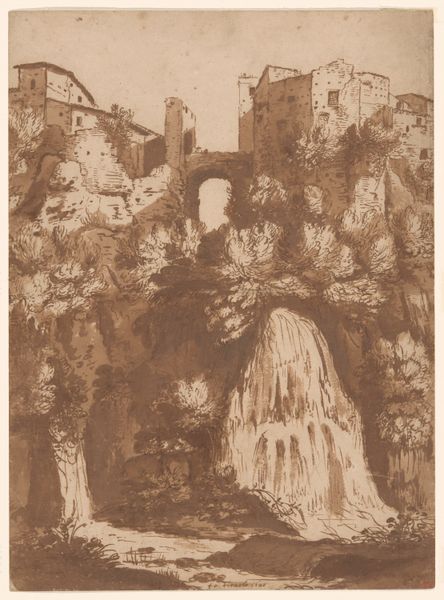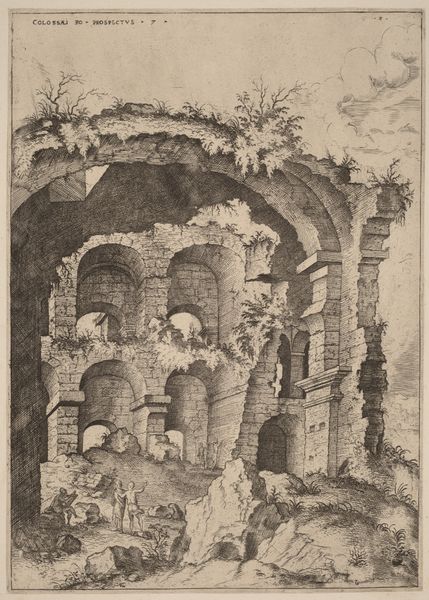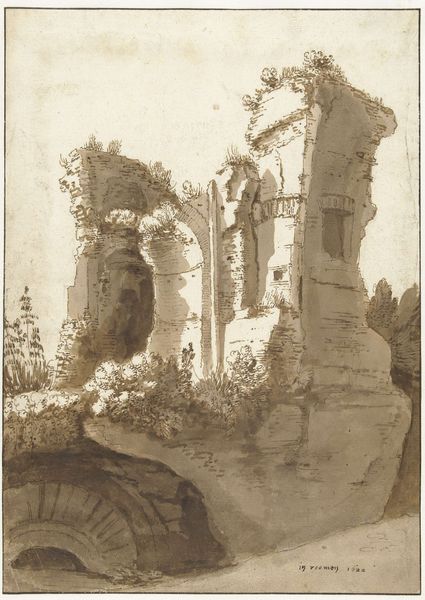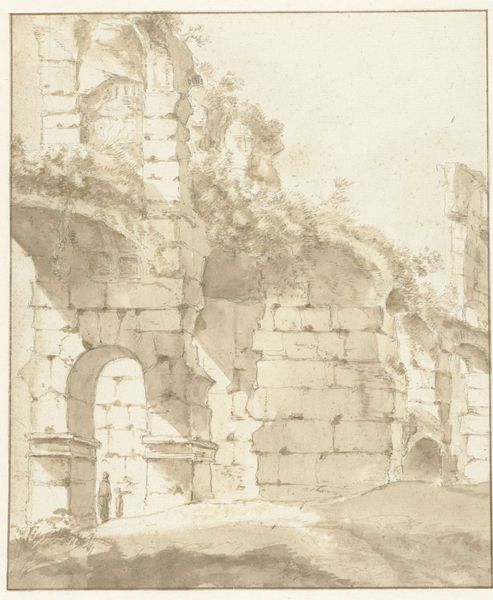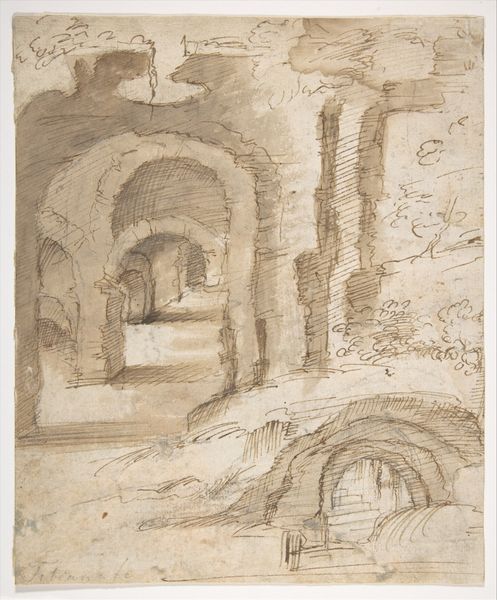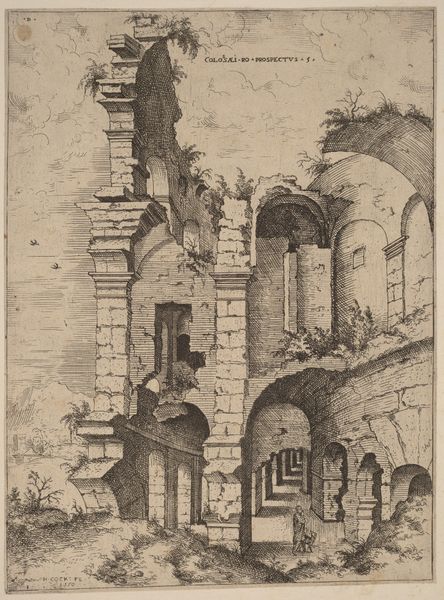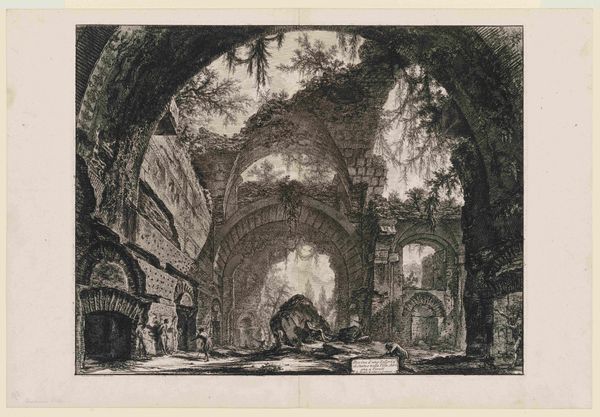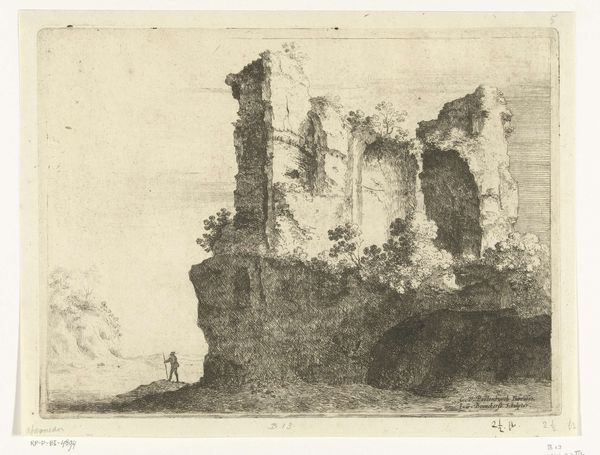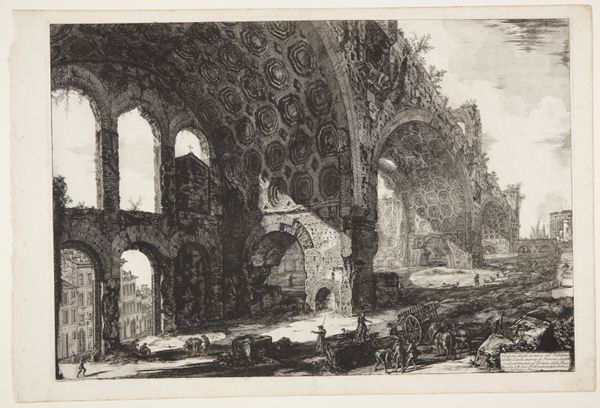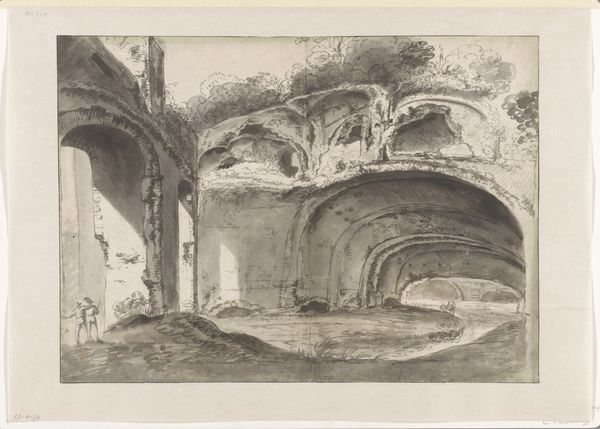
drawing, ink
#
drawing
#
landscape
#
form
#
ink
#
ancient-mediterranean
#
line
#
cityscape
#
history-painting
#
italian-renaissance
#
realism
Dimensions: 10 1/2 x 7 5/8 in. (26.7 x 19.4 cm)
Copyright: Public Domain
Curator: Here we have Bartholomeus Breenbergh’s “Colosseum,” dating from between 1610 and 1657. It’s currently held at the Metropolitan Museum of Art. Editor: It immediately strikes me with its sepia tones; there is an earthy, almost mournful quality. The ruins are prominent. I can almost feel the decay in the drawing. Curator: Breenbergh was part of a wave of Northern European artists drawn to Rome, keen to capture its ancient monuments. Consider how the image projects the power of Roman history. What purpose did such art serve back home? Editor: And the Colosseum, of course, as a crucial example of Roman engineering, built from travertine, tufa, and brick-faced concrete. The labor, from quarrying to placement, must have been immense! Curator: Absolutely. It's about the spectacle, too – the gladiatorial combats, public executions. How did this iconography reflect or impact European societal structures of that time? The echoes of power are deliberate, don't you think? Editor: Definitely. One observes that, even in decay, the bones of the structure retain this oppressive authority and suggest control and class divisions from then and even reflected now. Look at the detail achieved with what appear to be pen and ink in representing the rough, weathered texture. Curator: Consider the influence these images had. The market for such views – etchings, drawings, paintings – helped to shape perceptions of Rome. A visualization of grandeur and decay marketed back to a European audience eager to connect with classical roots. Editor: It's all about access to power. Now, its availability speaks of wider consumption; the shift in the use of materials for production democratizing, ironically, something once only accessed by elites, while still maintaining exclusivity for some. Curator: True, the visual language of power shifts over time. I like that tension, and how Breenbergh's rendition helps to illuminate it. Editor: Me too. It's fascinating how focusing on the materiality and means of production here helps unpack such complex dialogues on power, class, and perception.
Comments
No comments
Be the first to comment and join the conversation on the ultimate creative platform.
